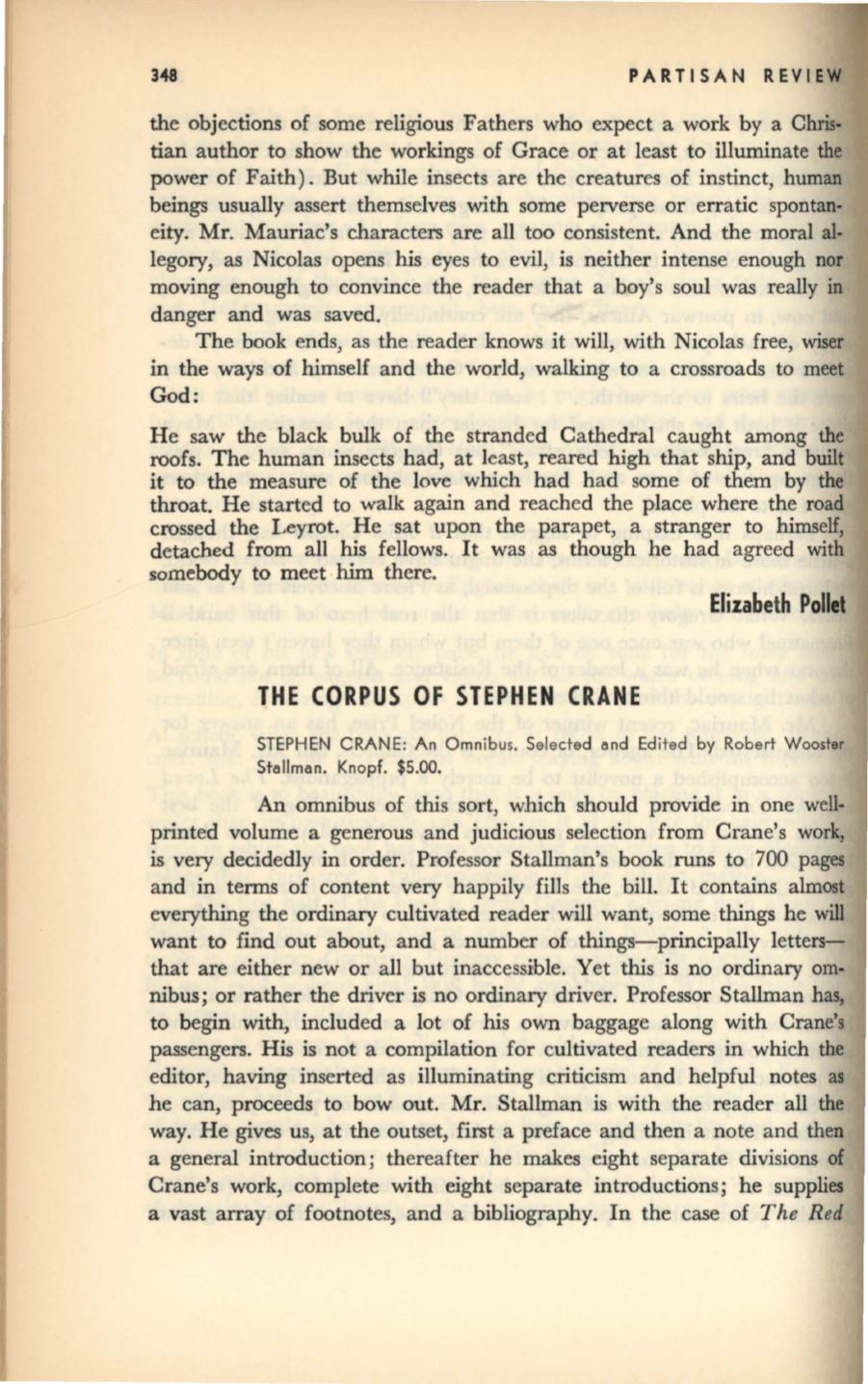
348
PARTISAN REVIEW
the objections of some religious Fathers who expect a work by a Chris–
tian author to show the workings of Grace or at least to illuminate the
power of Faith). But while insects are the creatures of instinct, human
beings usually assert themselves with some perverse or erratic spontan–
eity. Mr. Mauriac's characters are all too consistent. And the moral
al–
legory, as Nicolas opens his eyes to evil, is neither intense enough nor
moving enough to convince the reader that a boy's soul was really
in
danger and was saved.
The book ends, as the reader knows it will, with Nicolas free,
wiser
in the ways of himself and the world, walking to a crossroads to meet
God:
He saw the black bulk of the stranded Cathedral caught among the
roofs. The human insects had, at least, reared high that ship, and built
it to the measure of the love which had had some of them by the
throat. He started to walk again and reached the place where the road
crossed the Leyrot. He sat upon the parapet, a stranger to himself,
detached from all his fellows. It was as though he had agreed with
somebody to meet him there.
Elizabeth Pollet
THE CORPUS OF STEPHEN CRANE
STEPHEN CRANE: An Omnibus. Selected and Edited by Robert Wooster
Stallman. Knopf. $5.00.
An omnibus of this sort, which should provide in one well–
printed volume a generous and judicious selection from Crane's work,
is very decidedly in order. Professor Stallman's book runs to 700 pages
and in terms of content very happily fills the bill.
It
contains almost
everything the ordinary cultivated reader will want, some things he will
want to find out about, and a number of things-principally letters–
that are either new or all but inaccessible. Yet this is no ordinary om–
nibus; or rather the driver is no ordinary driver. Professor Stallman has,
to begin with, included a lot of his own baggage along with Crane's
passengers. His is not a compilation for cultivated readers
in
which the
editor, having inserted as illuminating criticism and helpful notes as
he can, proceeds to bow out. Mr. Stallman is with the reader all the
way. He gives us, at the outset, first a preface and then a note and then
a general introduction; thereafter he makes eight separate divisions of
Crane's work, complete with eight separate introductions; he supplies
a vast array of footnotes, and a bibliography. In the case of
The Red


